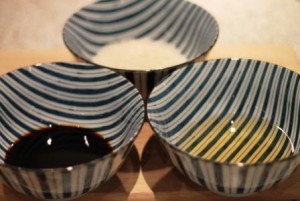 Sushi course deluxe is a course tailored to your needs and your desires, where I come to your place and teach a course to a small group of people.
Sushi course deluxe is a course tailored to your needs and your desires, where I come to your place and teach a course to a small group of people.
You learn about Japanese traditions and what makes Japanese sushi uniqu
You get an insight into how rice is boiled using Japanese techniques.
You learn about what you should be aware of when you make sushi with different kinds of raw fish.
You learn step-by-step how to make futomaki, Hoso-maki, inside-out, and nigiri.
Reference from individuals
“Zoë Escher helped us with a sushi course for 13 people to a bachelor party. It was a really nice experience!
Zoë had control of things, and was full of great tips and recipes for everyone, both for novices and those who had tried making sushi before. The style was fresh, competent, informative and entertaining, and when we were finished, we had sushi enough for an army – there was no one who went home hungry”.
Stephanie Munck, Code Slinger
“Exciting, educational – and just enormously cozy with good friends. Over a glass of cold wine we made lots of while Zoë instructed, gave good advice and shared her huge knowledge about Japanese sushi. We got many good tips – on everything from knives to where to buy the best fish. I can definitely recommend”.
Christina Lagoni, KPMG Denmark
Reference from companies
A.P. Moller – Maersk, Hugo Boss Nordic, Novo Nordisk, Novartis, Takeda Pharma, Haldore Topso, 3F Ungdom, Hoje-Taastrup kommune, Gorrissen Federspiel, Quartz+Co.
Please read more about private cooking class: Sushi course deluxe
_
Zoë has held sushi courses and cooking classes for A. P. Moller – Maersk, Hugo Boss Nordic, Novo Nordisk, Novartis, Velux, Gorrissen Federspiel, Beierholm revision, Elbek & Vejrup and many more.
Gem
Gem
Gem
Gem
Gem









